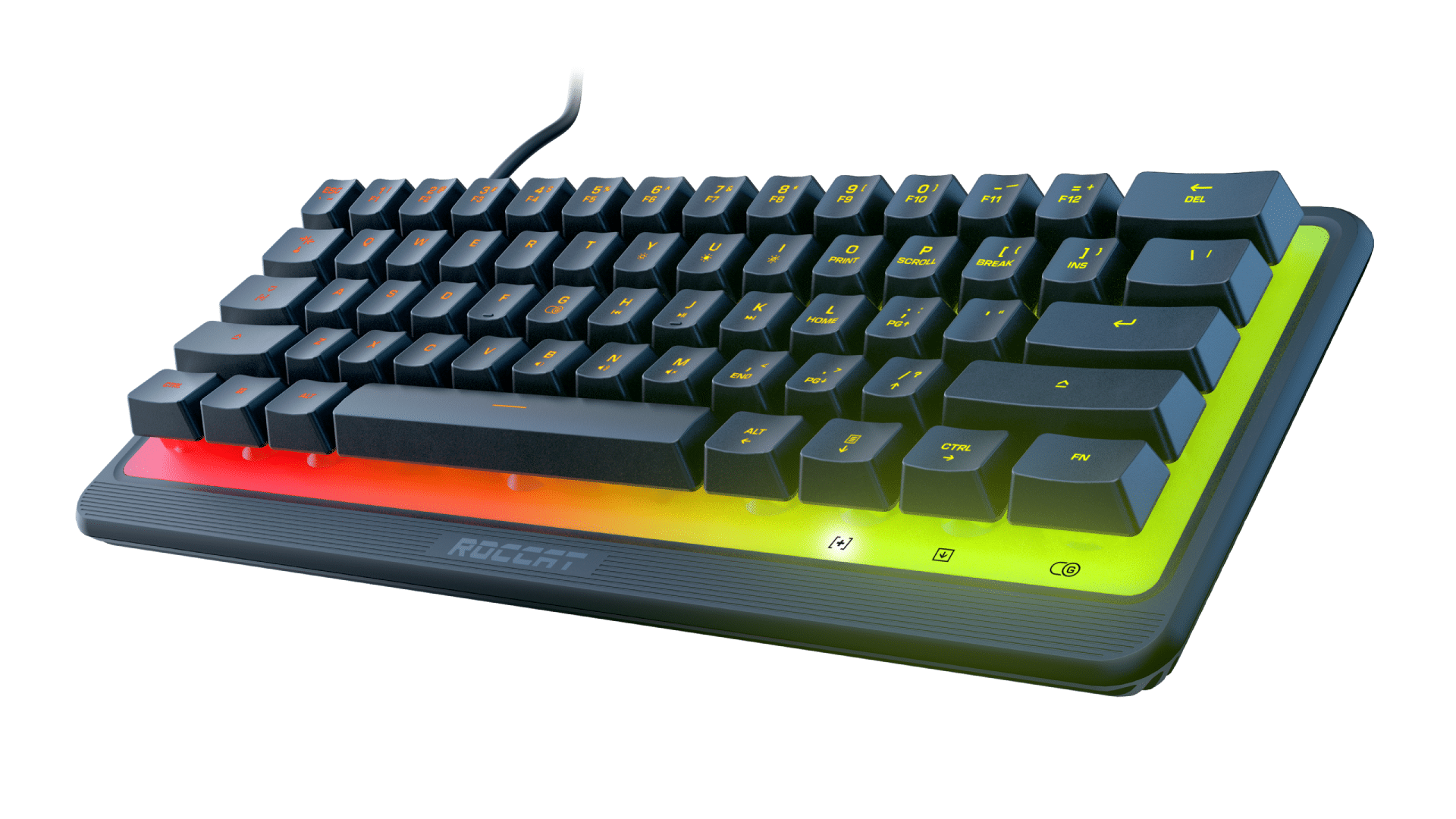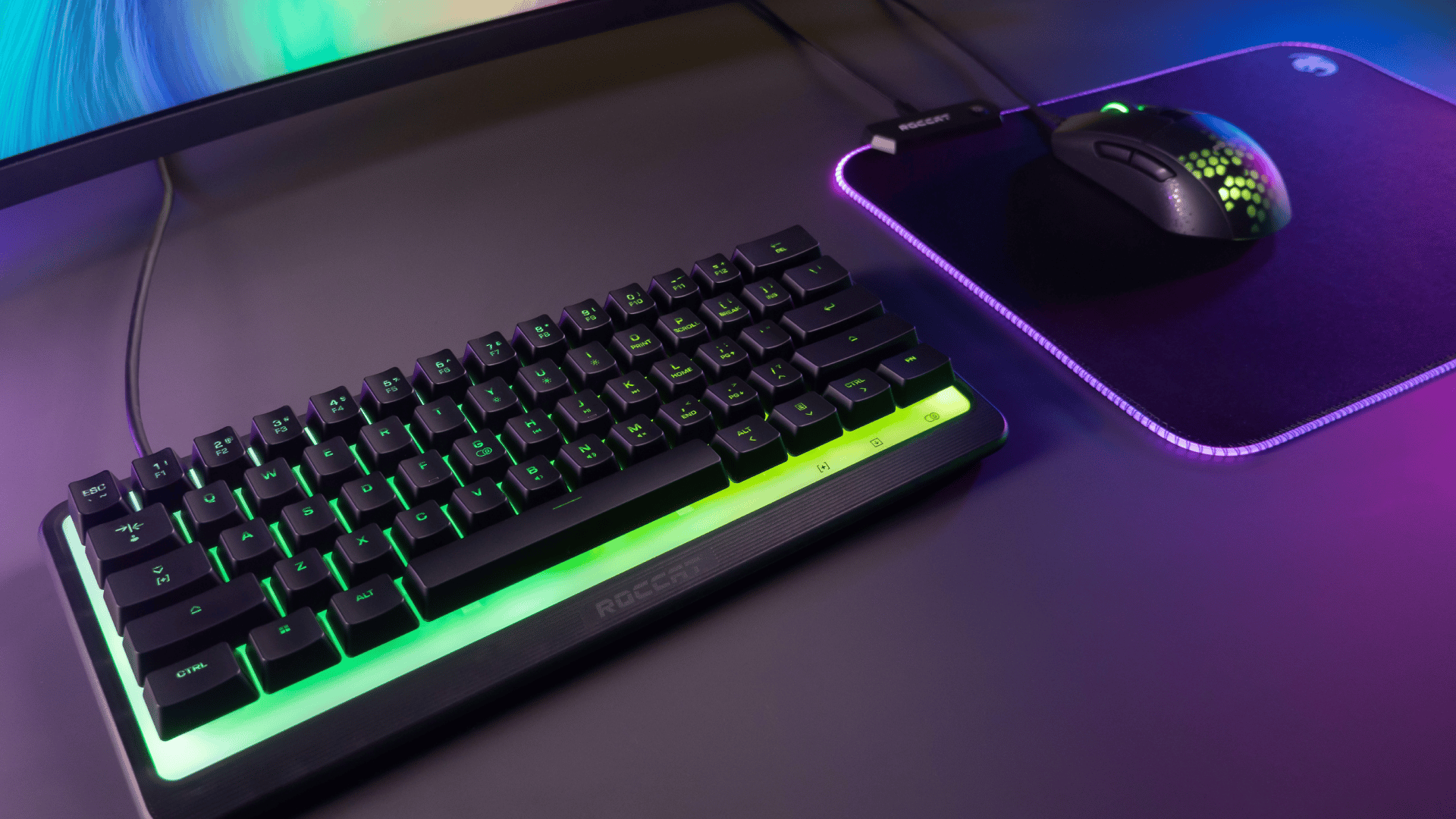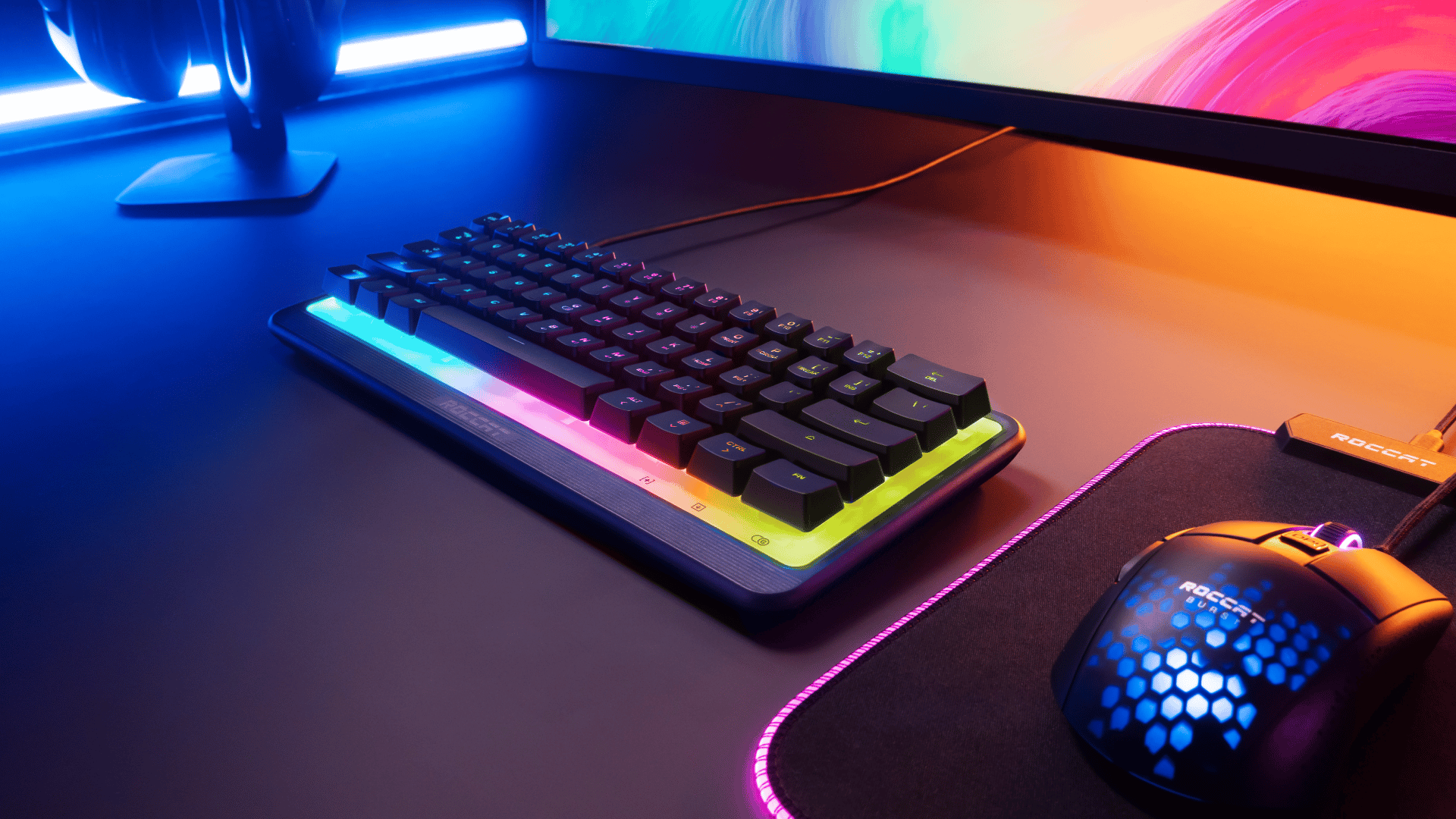Rolling off the success of their Vulcan II Mini keyboards, Roccat is back again with yet another exciting new entry to their mini-keyboard lineup, this time downsizing a fan favorite, The Magma. You read right; there’s now a Magma Mini available, and we’ve been testing this new 60% form factor board over the last few weeks. Come, let’s dig in!
Too Hot to Handle
Alright, if you’ve been following Roccat on Twitter, then you’ve probably seen the marketing video of them pouring water on the Magma Mini. I didn’t believe it was an actual video because, being a PC gamer, the thought of getting any of my PC hardware or peripheral wet is an absolute nightmare. But hey, they showed it, so it’s safe to try, right? Not that I recommend it, but here’s the most anxiety-inducing video you’ll watch all day today.
This recording was 20+ days ago, and the Magma Mini is still running like I just took it out of the box. Now personally, I don’t plan to ever have a beverage near my PC set-up, but I’ve seen enough streamers and co-workers doing just that, so I get the appeal of having a water-proof keyboard.
Moving on to the real reason why I’m so fond of the Magma Mini, the fully lit top plate.
Something is screaming retro about how the board lights up, and I love it. It’s flashy, a standout for those wanting to spice up their set-up with bright RGB lights. As for customization, you’ll be able to change the top plate’s lighting via Roccat’s Swarm software. Five zones can be adjusted with different colors, with different pattern choices to choose from in the Swarm app. Unfortunately, for those who like having specific keys in a certain color, you’ll be disappointed as there are no LED on the keys like you see on the Vulcan boards.
The Magma Mini also doesn’t use Titan Optical switches but instead opts for membranical switches designed specifically by Roccat. Whether or not one switch type is better than the other all boils down to personal preference, but as far as performance goes, the Magma Mini feels superbly responsive. There’s no stickiness or noticeable input lag with presses, and you’ll notice a light tactile feeling for added feedback. However, the significant advantage of the membrane keys is that they’re insanely quiet with presses compared to mechanical and optical keyboards. For someone who typically works late in the evening and games at night, I found the noise level of Roccat’s membrane switches to be perfect as they’re barely audible. That means you can work and play throughout the night without the worry of someone hearing the loud clickety-clackety of the keyboard.
In overall size, it’s roughly 60% that of its full-sized counterpart (the Magma) and 5% smaller than Roccat’s Vulcan II Mini. While that may make it seem like a smaller board, there are some areas where the Vulcan II inches out. Specifically, while the Magma Mini is shorter in width (12.12′ inches for the Magma vs. 12.75 inches Vulcan II), the length is slightly more for the Magma Mini ( 5.20 inches vs. 4.56 inches). It’s not noticeable, at least for me, since all I care about is having more mouse space on a mini-board, which the smaller width provides. However, the Magma Mini height (1.44 inches) may be a bit more noticeable despite being less of a difference (1.22 inches for Vulcan II mini) than the other dimensions. It has more height than the Vulcan II Mini and even the Vulcan II Max (full-sized keyboard), which in some ways, is nice for hand positioning and rest. But if you were looking for something with a low profile, there are lower options, such as the previously mentioned Vulcan line. It’s still a very comfortable keyboard, nonetheless.
As for the connectivity, the Magma Mini uses a USB-A cable positioned on the board’s left side versus the center. It’s non-detachable, though understandable given its water resistance and any opening leading to potential damage. Personally, I prefer the center set-up since that allows you to go in any direction for cleaner cable management, but that’s a nitpick on my end, I feel.
The only real issue I have with the Magma Mini is that I was hoping to see the keycaps use mounts that supported the standardized Chery MX-style switch stems like in the new Vulcan II boards, but sadly they don’t. If you want custom keycaps, you’ll likely need to 3D print them yourself, as the designs are specific to this (and the full-sized Magma) keyboard. I would have loved to be able to easily change out the keys for some translucent ones, as the fully lit backplate could have made for some really cool custom designs. I still hope that Roccat offers key replacements of their own in the custom variant down the road, though I can understand if the demand isn’t there for it.
Verdict
For the budget gamers out there looking to add some flair to their desktop gaming set-up, all while saving space, the Roccat Magma Mini might just be the perfect board for you. At 60% form factor, there is very little to compete with it when it comes to features, such as it’s customizable RGB top-plate, silent keys, and easy+shift functionality, that many other mini-keyboards lack. It also comes in at a slightly lower price point ($49.99) than many RGB style keyboards on the market, so while it may not be as up-to-date in its switches, the price in the least reflects that. And at $49.99, you’re getting quite a value with the Roccat Magma Mini Keyboard.
Pros
- Beautiful transparent top plate that is fully lit up with RGB. One of the most gorgeous mini keyboards I’ve ever seen.
- Water resistance for those interested.
- 60% form factor gives you that extra desk space you desire.
- Silent in key presses. One of the most quiet keyboards you’ll ever use.
- Easy+Shift adds additional key functionality, and is much welcomed in mini keyboards.
- Price – Hard to beat $49.99 considering everything it has compared to other mini keyboards.
Cons
- Uses non-standardized switches, which means you favorite keycaps probably won’t work on it.
Equipment tested on a desktop PC. The publisher provided hardware for review purposes. You can read SP1st and MP1st’s review and scoring policy right here.



